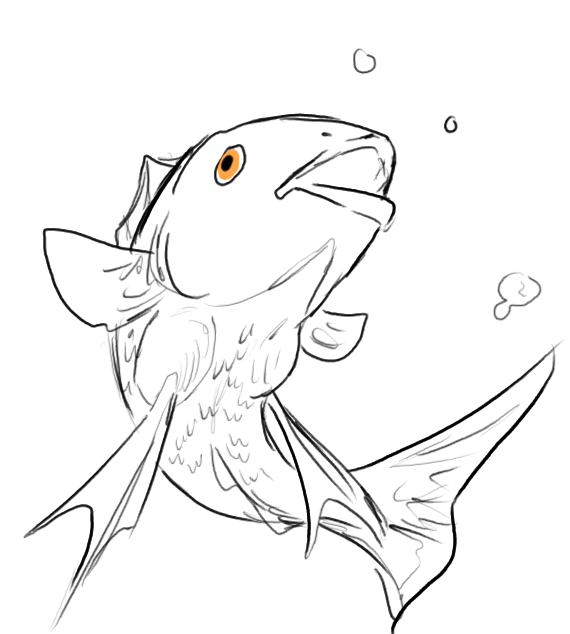Flaming Tundra Cod (5e Creature)
Flaming Tundra Cod[edit]
|
Tiny beast, unaligned Armor Class 12
Proficiency Bonus +2 Swim Away. The cod does not provoke opportunity attacks when it swims out of an enemy's reach. Underwater Camouflage. The cod has advantage on Dexterity (Stealth) checks made while underwater. Water Breathing. The cod can only breathe underwater. ACTIONSTail. Melee Weapon Attack: +0 to hit, reach 5 ft., one target. Hit: 1 bludgeoning damage. Scald (Recharge 6, can only be used while it is underwater). The cod boils the water in a 5-foot sphere around it by releasing heated gas. Each creature in that area must succeed on a DC 10 Dexterity saving throw or take 2 (1d4) fire damage. A creature with a swimming speed has advantage on the save.
|
 By Yanied A simple creature, the Flaming Tundra cod is the only fully aquatic creature in its namesake habitat. Just over a foot long, the hardy fish's scales are a gleaming silver-white, with large, orange eyes and wide gills. The Flaming Tundra cod spends its days in the Tundra's rivers and lakes, swimming beneath the ice and eating drifting geysers. However, when a predator, such as the devil's trumpeter, breaches the ice, the cod will attempt to swim quickly in random directions. Most predators of the Flaming Tundra cod, because of this, have learned to make quick, effective jabs at the ice to break through and snatch a fish. Rather than fire breath, since the cod lives underwater, the gas sacs' gasses are expelled, unignited but still heated, through the gills, causing the water around it to reach boiling temperatures. Flaming Tundra cod spend the winter spawning upriver, while the ice is thickest, and return downstream as soon as their eggs have been laid and fertilized. The young are left to fend for themselves, but are seldom targeted by predators due to their diminutive size. |
Back to Main Page → 5e Homebrew → Creatures
